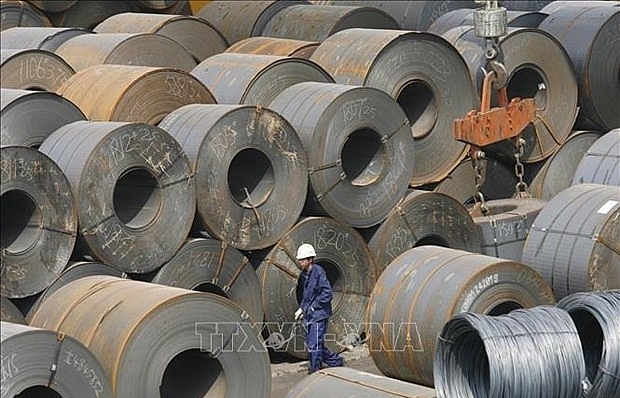Chinese salt imports reach Cambodia at $100 per tonne
Chinese salt imports reach Cambodia at $100 per tonne
Salt imports from China are expected to sell at $100 per tonne in the Cambodian market, $25 more per tonne than local salt, according to the Salt Producers Community of Kampot-Kep (SPCKK).
The latest shipment of Chinese salt reached Phnom Penh Autonomous Port at the end of November, bringing the salt stockpile volume to 10,000 tonnes.
SPCKK co-president Bun Baraing told The Post that the salt has not yet been introduced into the domestic market as the association is clearing logistics documents at the port. However, he expects that the salt will be sold at $100 per tonne.
“We have to release the salt by today [Thursday] and supply the market as soon as possible, as it is prahok fish season, so salt is in high demand . . . The total cost of import is already $90 [per tonne] and it will sell at $100 per tonne,” he said.
The price of local salt rose to $75 per tonne this year from $52 last year.
This is the second time the Kingdom has imported salt, after previously spending $2.2 million to import 20,000 tonnes from China in 2009.
Chan Silsocheat, general manager at local fish sauce enterprise Ngov Heng Kampot Fish Sauce, said if the industry continues to import salt, it will impact local production and bring along fierce competition with imported finished products.
“As this is the first year of salt shortages, it has not impacted our production line yet, but if [the shortage continues] next year, it will be detrimental to the production line and costs as we still rely on the imported salt."
“Currently for those who have no salt stock reserves, it would be harmful as the imported salt is more expensive than our local salt,” he said.
While a community salt producer, Thaung Enterprise founder Thaung Thyda, said despite the higher price tag of the salt, imported finished products are cheaper in the market than locally produced ones.
“The most expensive thing is the processing [of the salt]. Importing of finished products is cheaper and [would bring] price competition in the market. The large scale consumption of these imported finished products would present a challenge for local farmers and producers."
“We hope that next year, we will do better to supply our own market,” she said.














